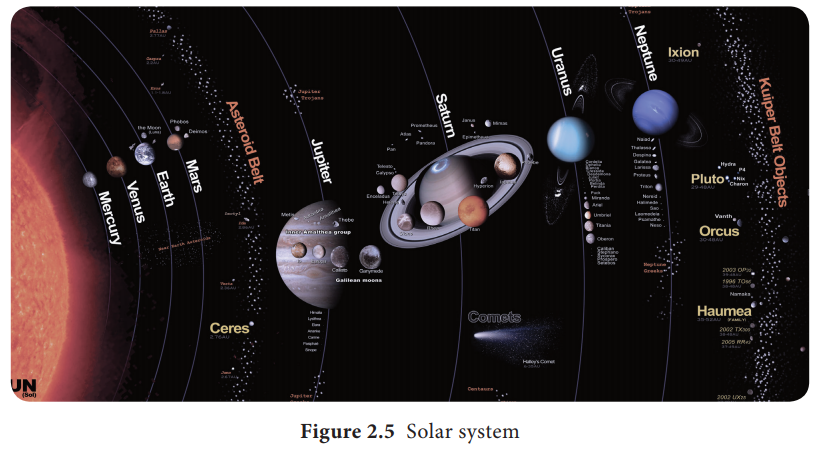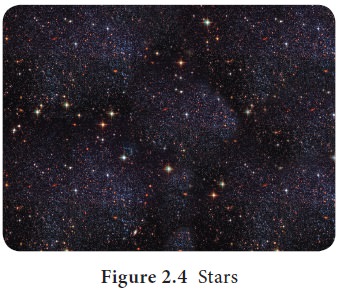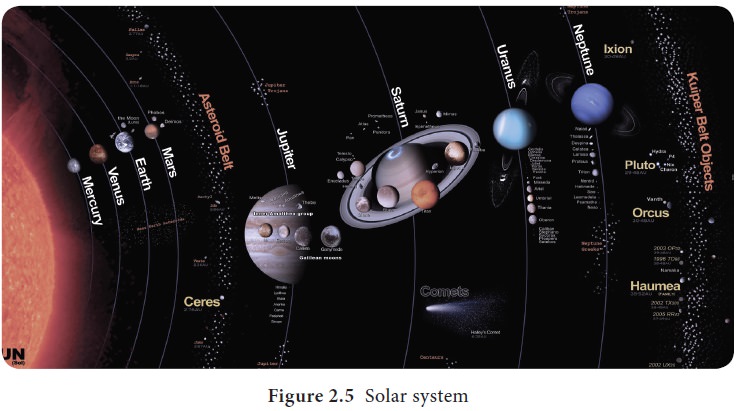Chapter: 11th Geography : Chapter 2 : The Solar system and the Earth
The Solar system

The
Solar system
A solar system consists of a star (Figure 2.4) at the centre and the eight planets, moons, asteroids, comets and meteoroids that revolve it. The eight planets, namely the Mercury, Venus, Earth, Mars, Jupiter, Saturn, Uranus and Neptune, revolve around the sun in fixed elliptical paths known as ‘orbits’.
Most stars host their own
planets. So there are billions of other solar systems in the Milky Way galaxy
alone.

Solar systems can also have more than one star.
These are called binary star systems if there are two stars or multi-star
systems if there are three or more stars. Our solar system is located in an
outer spiral arm of the vast Milky Way galaxy. Our solar system orbits the
centre of the Milky Way Galaxy at about 828,000 km/h. Our solar system takes
about 230 million years to complete one orbit around the galactic centre.
The solar system is believed to have been formed about 4.6 billion years ago. The solar system also includes the Kuiper Belt that lies past Neptune's orbit. This is a sparsely occupied ring of icy bodies. This is almost all smaller than the dwarf planet Pluto. Beyond the fringes of the Kuiper belt (Figure 2.5) is the Oort cloud. This giant spherical shell surrounds our solar system. It has never been directly observed, but its existence is predicted based on mathematical models and observations of comets that likely originate there.

The Oort cloud is made up of icy pieces of space
debris. It is orbiting our Sun as far as 1.6 light years away. This shell of
material is thick, extending from 5,000 astronomical units to 100,000
astronomical units. One astronomical unit (AU) is the distance from the Sun to
Earth, or about 150 million kilometre. The Oort cloud is the boundary of the
Sun's gravitational influence, where orbiting objects can turn around and
return closer to our Sun.
There are more than 163 known natural satellites in our solar system and several more awaiting confirmation of discovery. Of the eight planets, Mercury and Venus are the only planets with no satellites while the Jupiter and Saturn have the highest number of satellites in our solar system.
Related Topics